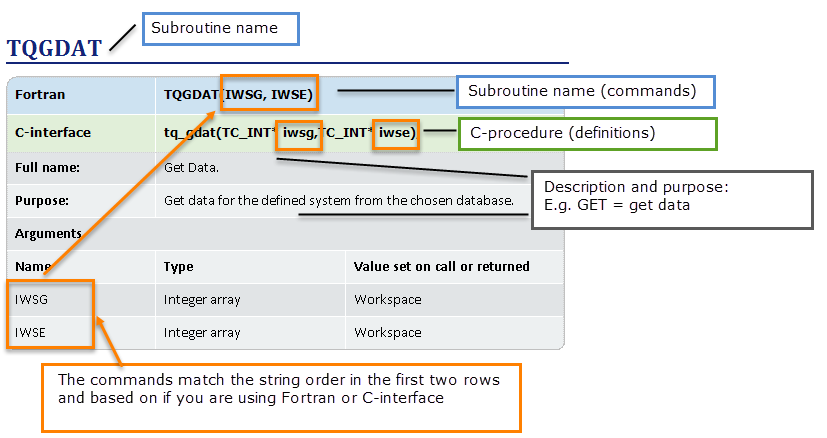TQGCCF
| Fortran |
TQGCCF(INDEXC, NEL, ELNAM, STOI, MMASS, IWSG, IWSE) |
|
|---|---|---|
| C-interface |
tq_gccf(TC_INT indexc,TC_INT* nel,tc_elements_strings* elname,TC_FLOAT* stoi,TC_FLOAT* mmass,TC_INT* iwsg, TC_INT* iwse); |
|
|
Full name: |
Get Component Chemical Formula. |
|
|
Purpose: |
Get the stoichiometry array for a system component in terms of element. |
|
|
Comments: |
Obtain the real elements in a component. All other subroutines just deal with a name that does not have to be related to the actual chemical formula. This is also the only subroutine that can provide the symbols of the actual elements in the system. The dimension of ELNAM and STOI is NEL (number of elements in the component). |
|
|
Arguments |
||
|
Name |
Type |
Value set on call or returned |
|
INDEXC |
Integer |
Set to system a component index. |
|
NEL |
Integer |
Number of elements in chemical formula. |
|
ELNAM |
Character*2 array |
Element symbols. |
|
STOI |
Double precision array |
Stoichiometry array. |
|
MMASS |
Double precision |
Total mass. |
|
IWSG |
Integer array |
Workspace |
|
IWSE |
Integer array |
Workspace |
Note the following conventions to distinguish between the programming languages.
- Routines starting with TQXXX, for example, TQGDAT, are in the Fortran interface
- Routines starting with tq_xxxx, for example tq_gdat, are in the C-interface.
- In Fortran, all routines are subroutines and do not return any values except where explicitly declared as functions.
- All the C procedures are declared as void and do not return any values except where explicitly otherwise declared.
An example of how to read the subroutine definitions.
